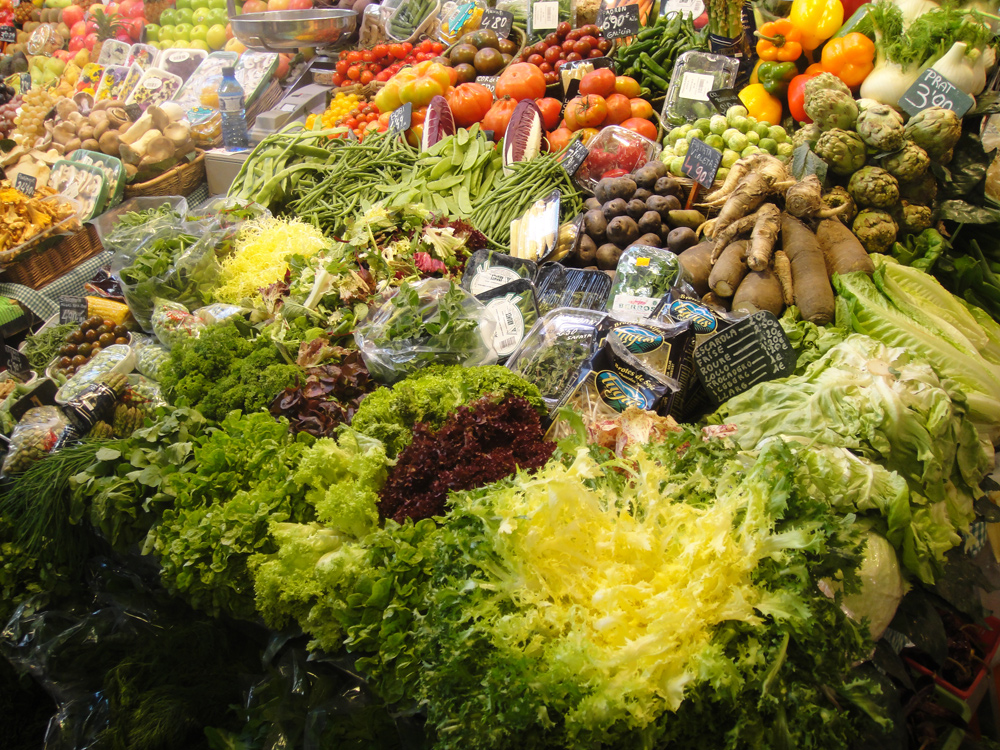
Ah! It’s that time of (day/week/month again)… time for a trip to the grocery store, that veritable amusement park of colors, smells and temptations driven to explode your budget and decimate your healthy eating goals. You have your list. You have your cart. You have your plan… and you have your toddler.
Imagine how overwhelming the stimuli of a typical grocery store would be at your young child’s level. The rainbow of colors, the unpredictable movement of carts, the stress of other shoppers, the loudspeakers and fluorescent lighting: very little about a typical grocery store is designed with children in mind: except, of course, the placement of high-sugar convenience items you wish your child have never seen!
While the environment may not have been prepared for toddlers, you can nonetheless prepare yourself and your toddler for the environment. Save the big shops for times when your child does not have to be with you: navigating a full grocery cart and an expansive list is stressful enough! But do take your child with you for smaller shopping excursions, even if it means going to the grocery more often. Let your child know, “We are going to the grocery store! Here is our list of ingredients we’ll need today.” Let your child see your list and read it aloud for him or her, asking prompting questions about the items you need.
“We are going to get some apples. Would you like green apples or red apples?”
“We need eggs. I want to have enough eggs so that each of us can have four this week. Let’s count: 1,2,3,4,5,6,7,8,9,10,11,12. We will need twelve eggs.”
Once you’re at the grocery, avoid seating your child in the cart (which is likely to lead to restrictions to his or her movement and frustration in wanting to turn with ease). Instead, let your child walk beside you and model moving slowly in the store. If possible, avoid the cart entirely and instead choose a basket that you can carry and set on the floor for your child to help place items as you locate them from your list. With each item found, let your child help you to cross it off your list. And throughout your visit, remember: talk, talk talk! You can narrate everything you see in the grocery to help give your child some direction and focus in an otherwise overwhelming environment. Think about the grocery experience first as an opportunity for your child to learn about his community, you may find a bit more patience for the task.
Plan your route: most grocery layouts are both predictable and designed to entice you to buy. Expect that the flowers will be near to the front door. Prepare your child that there will be flowers for you to smell. Model placing your hands on your hips or behind your back as you smell the floral bouquets. As you move through the produce section, draw your child’s attention to curious vegetables or fruits you see. You can play simple games of “I Spy” to keep your child on track through the produce area, “I spy a red fruit…” “I spy a purple vegetable…” or ask your child to search with his eyes to find something blue, something round, something prickly. The bakery is typically next. Let your child close his eyes to smell the breads in the bakery. If he catches sight of the colorful cupcakes and desserts, let that inspire conversation about their shapes and colors. If your child asks for something not on your list, you can simply reply, “Today we are getting what’s on our list. Let’s look at the desserts together before we move on.” The Dairy and Meat sections usually line the outside walls of the grocery, with nonperishable items in the center rows. Be ready for the endcaps! Endcap displays are often filled with the most colorful and most attractive impulse buys… unavoidable as you move to the deepest part of the center aisles, where the most commonly purchase nonperishables are displayed. Again, remind your child that you are getting only what’s on your list, but let him take the time to notice the shapes, colors and smells of these very appealing items.
You may not be able to avoid the attraction of these displays, but you can be prepared for how to navigate through them with calm, predictable language. Knowing that a trip to the grocery store is likely to include some redirection of your child’s impulses, be prepared to offer him ways to contribute to the process. Carrying a basket instead of pushing a cart allows you to place your basket on the floor while your child retrieves an item from the shelf to put in. Asking your child open ended questions allows him to be engaged in conversation, and choosing only those items you can manage in a short trip allows an appropriate expectation of time and self-restraint for your child and patience and attentiveness from you.
Remember: the grocery store, even in the best of circumstances, is visual, auditory, tactile, olfactory and gustatory overload. When you are in a sensorially overwhelming environment, balance that stimuli by lowering your voice, maintaining your composure, and moving slowly. Model calm, even if your child struggles to maintain his. Your child needs a peaceful, steady balance to an unpredictable and cacophonous environment. Until he has internalized that self-restraint himself, you’ll need to provide it for him.
Bon appétit!
#FirstPlane #ForParents #MontessoriAtHome #Toddlers
